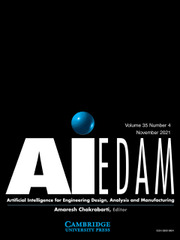Article contents
Comparing mathematical and heuristic approaches for scientific data analysis
Published online by Cambridge University Press: 12 December 2007
Abstract
Scientific data is often analyzed in the context of domain-specific problems, for example, failure diagnostics, predictive analysis, and computational estimation. These problems can be solved using approaches such as mathematical models or heuristic methods. In this paper we compare a heuristic approach based on mining stored data with a mathematical approach based on applying state-of-the-art formulae to solve an estimation problem. The goal is to estimate results of scientific experiments given their input conditions. We present a comparative study based on sample space, time complexity, and data storage with respect to a real application in materials science. Performance evaluation with real materials science data is also presented, taking into account accuracy and efficiency. We find that both approaches have their pros and cons in computational estimation. Similar arguments can be applied to other scientific problems such as failure diagnostics and predictive analysis. In the estimation problem in this paper, heuristic methods outperform mathematical models.
Keywords
Information
- Type
- Research Article
- Information
- Copyright
- Copyright © Cambridge University Press 2008
References
REFERENCES
- 5
- Cited by

